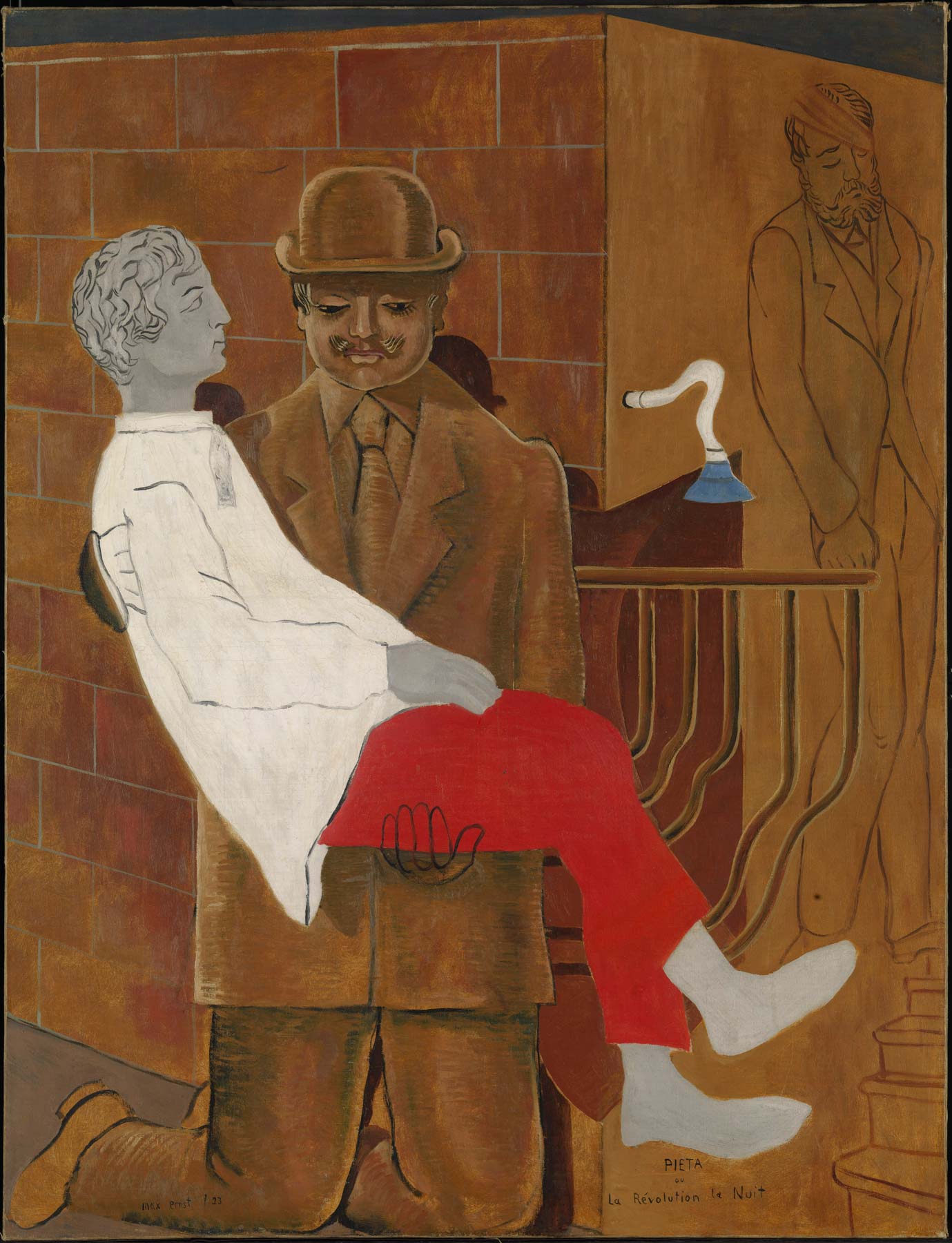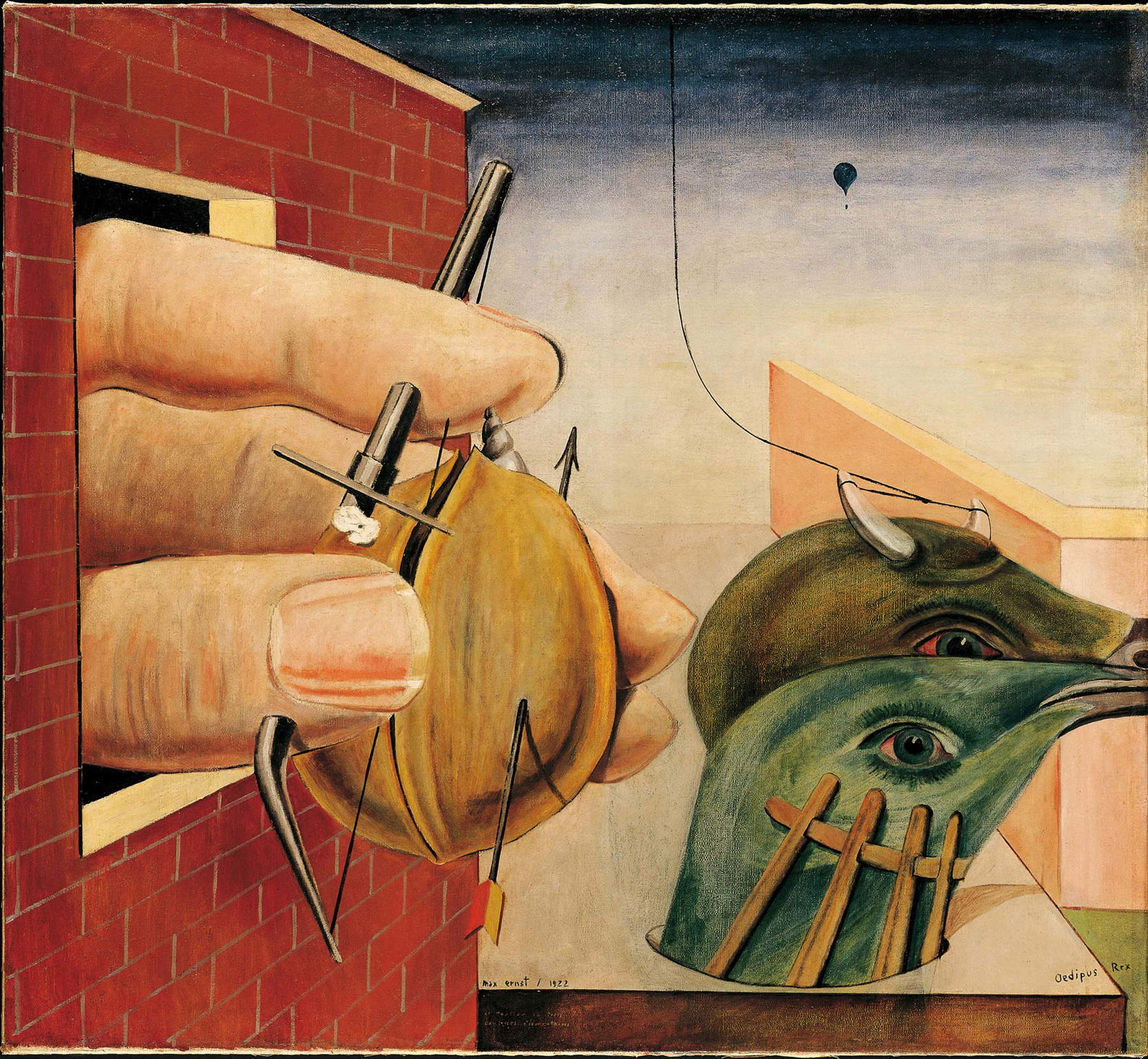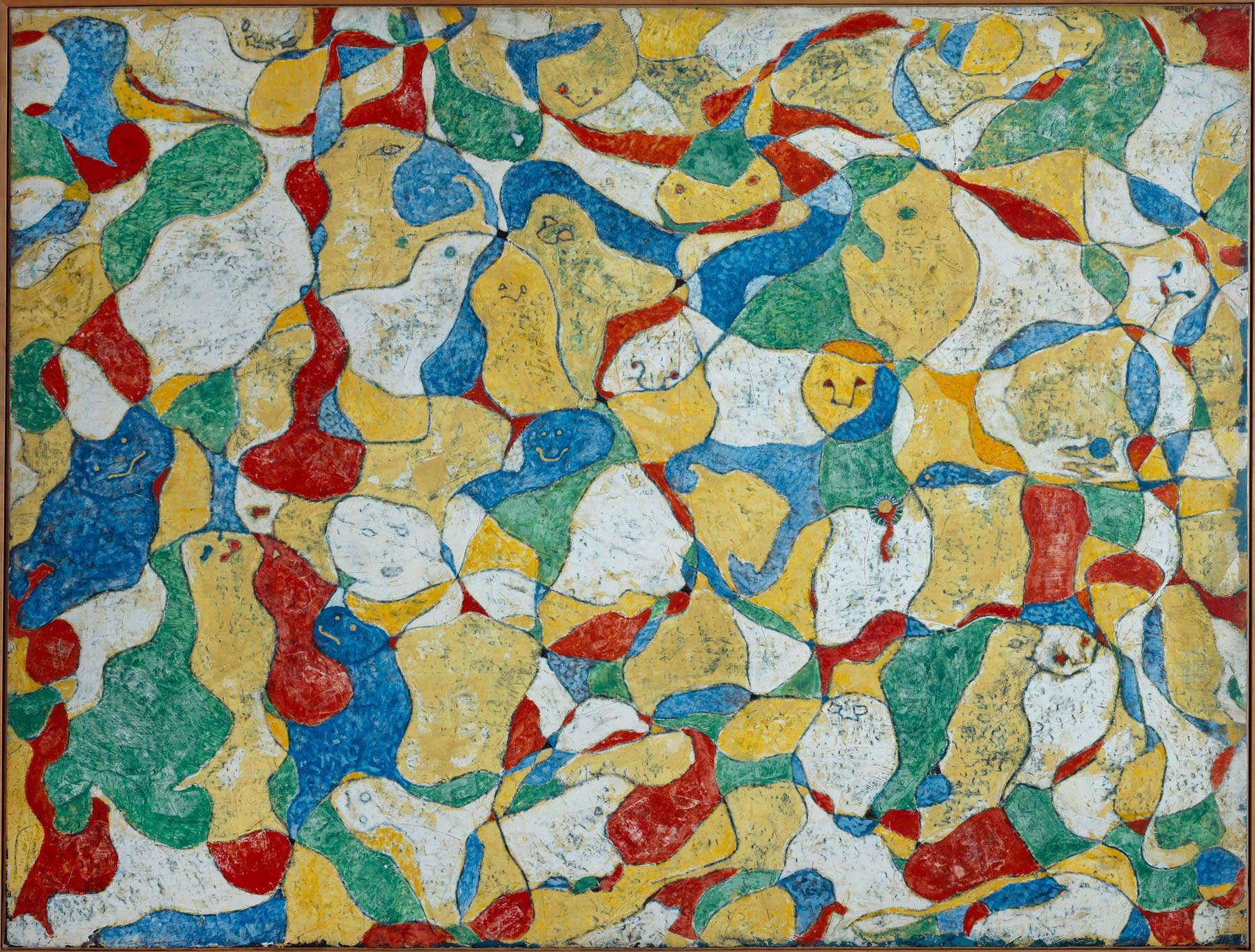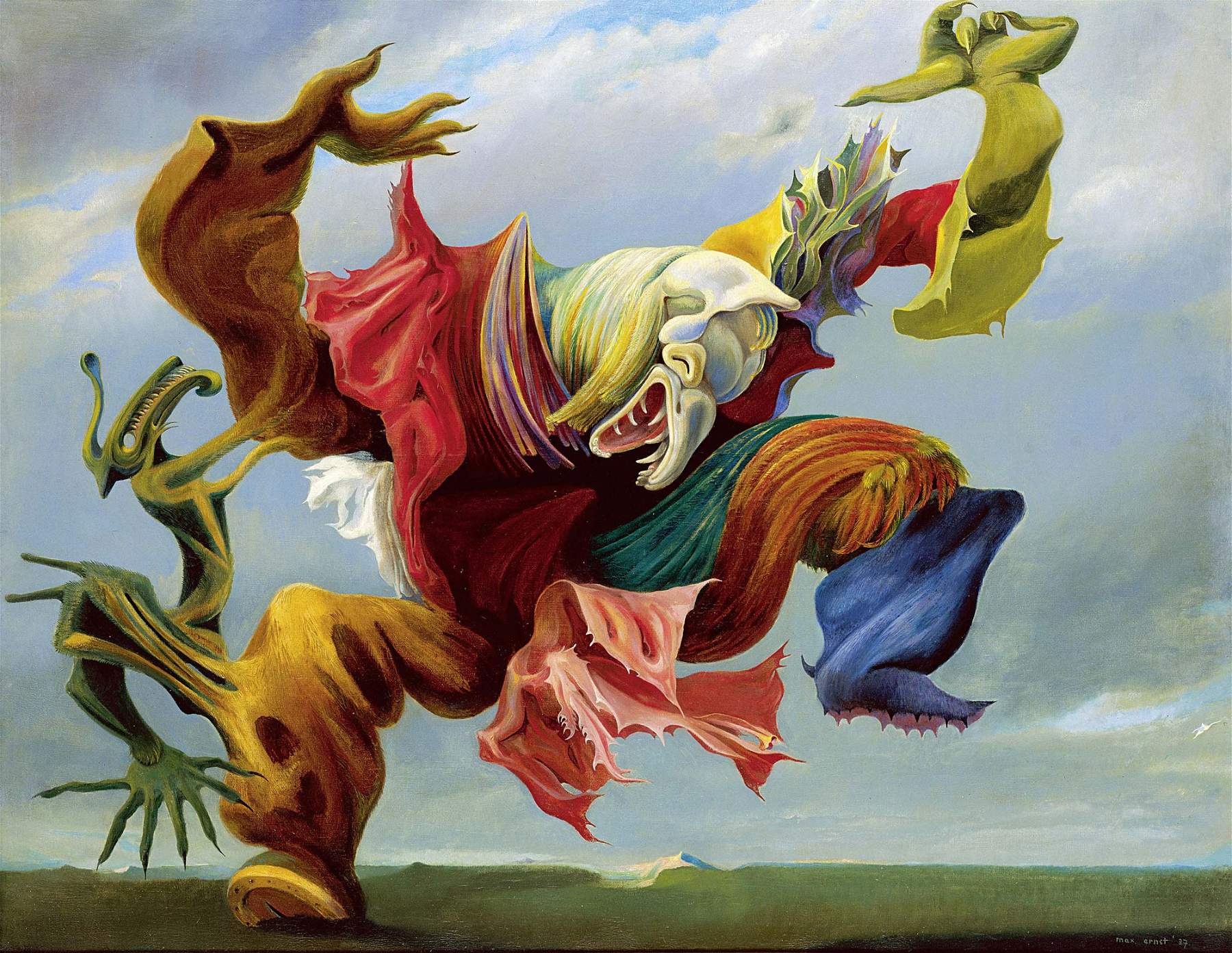From Oct. 4, 2022 to Feb. 26, 2023, Palazzo Reale in Milan will host the first Italian retrospective dedicated to Max Ernst (Brühl, 1891 - Paris, 1976), the great Surrealist painter, sculptor and poet, art theorist, German, later naturalized American and French. The exhibition, promoted and produced by Comune di Milano-Cultura and Palazzo Reale with Electa, in collaboration with Madeinart, is curated by Martina Mazzotta and Jürgen Pech and features more than 400 works including paintings, sculptures, drawings, collages, photographs, jewelry and illustrated books from museums, foundations and private collections in Italy and abroad. These include: the GAM in Turin, the Peggy Guggenheim Collection and the Ca’ Pesaro Museum in Venice, the Tate Gallery in London, the Centre Pompidou in Paris, the Cantini Museum in Marseille, the State Museums and the Arp Foundation in Berlin, the Beyeler Foundation in Basel, and the Thyssen-Bornemisza National Museum in Madrid. Among the loans were works and documents that had not been on public display for several decades.
The immense breadth of themes and experimentation in Ernst’s oeuvre spans some seventy years of 20th-century history between Europe and the United States. Pictor doctus, profound connoisseur and visionary interpreter of art history, philosophy, science and alchemy, Max Ernst is presented at the Milan exhibition as a humanist in the neo-Renaissance sense. Indeed, if André Chastel claimed to find in Ernst a kind of “reincarnation of those Rhenish authors of Bosch-like devilry,” Marcel Duchamp had traced in him “a complete inventory of the different epochs of Surrealism.”
On the main floor of the Royal Palace, the tour itinerary traces the artist’s adventurous creative parabola, marked by the great historical events of the 20th century and studded with extraordinary loves as well as illustrious friendships. The tour narrates Ernst’s biographical events by grouping them into four major periods, which are in turn divided into nine thematic rooms designed with interdisciplinary approaches to his art. In addition, a large, ideal library, the artist’s own, made up of illustrated books, study manuals, photographs, objects and documents, winds its way through the entire exhibition, inviting visitors to engage in games of cross-references and correspondences between the sources of inspiration and the works themselves.


Upon entering the exhibition rooms, the public is immediately invited to engage with a masterpiece that turns a century old this year, Oedipus Rex (1922). The visit begins at this point with the first two rooms, titled The Copernican Revolution and Inside the Vision, which accompany the first part of Ernst’s biography, in Germany from 1891 to 1921. It recounts his childhood and formative years in Germany, sources of memory and inspiration for the artist’s entire life, and then again the Great War, fought in the first person and equated with a period of death, resurrection, the return to life, marriage and the birth of his son Jimmy, the revolutionary advent of the Dada movement and the invention of collage, the first exhibition in France and proto-surrealism.
The second part of the biography (in France, 1922 to 1940) accompanies the next two rooms. In No. 3, The House of Eaubonne, the exhibition re-presents a reconstruction, supplemented with original fragments, of the frescoed house in which Ernst lived the ménage a trois with Gala and Paul Éluard. The central role of love, friendship and eroticism in his choices and poetics then becomes the protagonist of Room 4, Eros and Metamorphosis. Works featured in the first four rooms include The Crucifix (1914), Fiat Modes Pereat Ars (1919), The Cormorants (1920), Les Malheurs des Immortels (1922, in the only watercolor edition), Fragments of the House of Eaubonne (1923), The Kiss (1927), A Night of Love (1927), and Men Will Know Nothing of It (1927). The exhibition goes on to recount Ernst’s years in Paris and France, the rise of Surrealism, his second marriage to Marie-Berte and then his love with Leonora Carrington, deep friendships, exchanges and collaborations with so many avant-garde protagonists, travel and experimentation, the advent of World War II, and imprisonment as a “degenerate artist” wanted by the Nazis. Exile in the United States, arranged with the support of his son Jimmy and especially Peggy Guggenheim, whom the artist would briefly marry, introduces the America, 1941-1952 part of the biography.
His insertion into the international scene in New York, his great love and then marriage to Dorothea Tanning, and his move to Sedona, Arizona, to the house built and decorated by the artists, introduce the next rooms, The Four Elements (Forests/Earth, Birds/Air, Sea/Water, Hordes/Fire), Nature and Vision, and The Pleasure of Creating Forms (Gestaltungslust)-the pleasure of the eye (Augenlust). Here emerges in particular the role that nature and landscape play in the invention of techniques (frottage, grattage, decalcomania, and dripping), in the creation of strands of the fantastic and the marvelous that also invest sculpture and goldsmithing, reflecting a constant dialectical tension between word and image, between spirit and matter. Among the works in these sections are Histoire Naturelle (1925), Monument to Birds (1927), Young People in Petrified Attitudes (1927), The Forest (1927-28), Bird-Head (1934-35), A Lent Ear (1935), The Whole City (1936-37), A Fabric of Lies (1959), and The Party at Seillans (1964).
The return to Europe, from 1953 to 1976, continues with room number 8, titled Memory and Wonder, which brings together works from the different decades and illustrates how the history of culture, the return of the ancient become sources of inspiration and the object of Ernst’s marvelous art: an art that entertains an intimate and conscious relationship with the past and memory. Among the works presented: Pieta or The Revolution the Night (1923), The Antipope (ca.1941), The Hearth Angel (1937), Dream and Revolution (1945-’46), Project for a Monument to Leonardo da Vinci (1957), Among the Streets of Athens (1960), Hölderlin, Poems (1961), Romanticism (1964), Portrait of an Ancestor (1974). The finale, looking to the stars, is represented by Room 9, entitled Cosmos and Cryptographies. In the years leading up to man’s landing on the moon, art and science converse in Ernst’s works, opening up unprecedented looks at the cosmos and involving astronomy as well as anthropology, physics as well as pataphysics. Works, books and films introduce the artist’s extraordinary secret writings, those cryptographies that go beyond codified languages and address those capable of unraveling the mysteries of the cosmos. Among the works on display: The World of Naives (1965), The World of the Confused. Absolute Refusal to Live as a Tachiste (1965), Birth of a Galaxy (1969), Maximiliana or the Illegal Exercise of Astronomy (1964). The aim of the exhibition and the accompanying volume is to challenge visitors to engage in fascinating and intriguing games of perception between awe and wonder, where logic and formal harmony are accompanied by impenetrable enigmas, where works, techniques and constellations of symbols lead beyond painting.
The exhibition will be accompanied by a catalog published by Electa, a guidebook and a new edition, also by Electa, of two unavailable titles by Paola Dècina Lombardi on the Surrealist movement: Surrealism 1919-1969. Rebellion and Imagination and Woman, Freedom, Love. An anthology on surrealism.



“Milan,” says Mayor Giuseppe Sala, “is honored to host the first Max Ernst retrospective ever organized in Italy. The exhibition, promoted and produced by the City of Milan with Electa, traces the entire career of this multifaceted genius, who was born in Germany at the end of the 19th century and then lived for a long time in France and the United States, where he had taken refuge after being interned by the Nazis. Max Ernst was one of the most innovative artists of the twentieth century, a century he helped revolutionize by leading movements such as Dadaism or Surrealism. Through the more than four hundred works on display at the Royal Palace, from prestigious Italian and foreign museums, foundations and private collections, visitors will be involved in a journey laden with artistic innovations as well as illuminating glimpses into the tragedies of the twentieth century, such as World War I, World War II and Nazism, experienced firsthand by Ernst. The roundup of innovation and visionariness offered by the works of Max Ernst is a must-see for those who love art, history and want to understand reality through human genius. This exhibition gives even more luster to the proposal of Palazzo Reale, and makes Milan and its museum system more and more a protagonist of Italian culture.”
“There are authors who, by virtue of their impressive artistic production, continue to lend themselves to new studies and up-to-date interpretations,” says Culture Councilor Tommaso Sacchi. “An example of this is Max Ernst, the protagonist at Palazzo Reale of his first Italian retrospective, a project realized downstream of a long work of study and investigation carried out by the curators of the exhibition. A painter, sculptor, poet and art theorist, born in Germany, during his life Ernst went through both world wars and different moments, fulcrum of the history of the 20th century, leaving the doriginal country to be later naturalized American and French. Lintenso’s wealth of personal experiences inevitably led the artist to engage in a vast breadth of themes and experiments that still make him escape overly stringent and constrictive pigeonholing and definitions. The exhibition, thanks to the important number of works and documents, in some cases exhibited to the public for the first time after several decades of absence, describes the figure of one of the pivotal artists of the avant-garde of the twentieth century who, however, for the set of interests ranging from art to philosophy, from literature to psychology, from science to alchemy, has rightly had a humanist attitude in the Renaissance sense of the term. It will therefore be a journey of astonishment and wonder that visitors to the Royal Palace will have the opportunity to undertake as they delve into the constellations of symbols and visionary and heterogeneous worlds that Max Ernst was able to create, a journey accompanied by this volume that we hope will serve as a contribution to the continuing evolution of studies on the author.”
The exhibition opens Tuesday through Sunday from 10 a.m. to 7:30 p.m., Thursdays until 10:30 p.m., closed Mondays. Last admission one hour before closing. Reduced hours: Dec. 24, 2022 from 10 a.m. to 2:30 p.m., Dec. 25, 2022 from 2:30 p.m. to 6:30 p.m., Dec. 31, 2022 from 10 a.m. to 2:30 p.m., Jan. 1, 2023 from 2:30 p.m. to 7:30 p.m. Tickets: full open 17 euros (free date tickets, valid until 15 days before the exhibition closes), full 15 euros, reduced 13 euros (visitors aged 6 to 26 and over 65, Italian Touring Club members, FAI members; Coop members -all cooperatives, not just Lombardy-; Rinascentecard holders, International Visitors Card and Rinascente Employees; ticket holders adhering to the Monday Museums initiative -Poldi Pezzoli / Museo Teatrale alla Scala-; ticket holders of the screenings of the film review dedicated to Max Ernst at Cineteca Milano Arlecchino; ticket holders of the Music and Words concert at the Auditorium in Milan; military personnel, law enforcement officers not on duty, teachers; Trenitalia reductions: single holder of CartaFreccia with destination Milan -date of travel maximum 3 days exhibition visit-, holders of one-way ticket -date of travel maximum 3 days exhibition visit- or holder of valid monthly or annual Trenitalia supra-regional fare pass valid to reach Milan; FS Group employees upon showing company badge; Trenitalia 2x1 special, one ticket for two CartaFreccia members in possession of a ticket le Frecce with destination Milan and to intercity customers -trip date maximum 3 days exhibition visit date), reduced season tickets 10 euros (Musei Lombardia and Orticola Members season tickets, students up to 24 years old, disabled with validity less than 100% special reduced including audioguide 6 euros: groups of students from schools of all levels, groups organized directly by FAI and groups organized directly by TCI Touring Club to whom the fixed presale fee should not be applied, journalists with OdG card with stamp of the current year, employees of the Municipality of Milan with nominal badge -one possible accompanying guest pays 13 euro-, Civil Service volunteers working at the Municipality of Milan upon showing their identification card), family ticket including audioguide: 1 or 2 adults 10 euro / children from 6 to 14 years 6 euro. Free for children under 6 years old, licensed tour guides with identification card, one tour leader for each group, two tour leaders for each school group, one tour leader per disabled person presenting a need, one tour leader and one guide for each Touring Club and FAI group, journalists accredited by the Press Office of the Municipality and the Exhibition, employees of the Soprintendenza ai Beni Paesaggistici e Architettonici di Milano, ICOM cardholders, employees of the Polo Mostre Area of the Royal Palace (upon presentation of named card), members of the vigilance commission and fire brigade (upon presentation of unnamed card, free coupon holders. For information visit the Royal Palace website.
 |
| Max Ernst's first Italian retrospective in Milan, Palazzo Reale |
Warning: the translation into English of the original Italian article was created using automatic tools. We undertake to review all articles, but we do not guarantee the total absence of inaccuracies in the translation due to the program. You can find the original by clicking on the ITA button. If you find any mistake,please contact us.